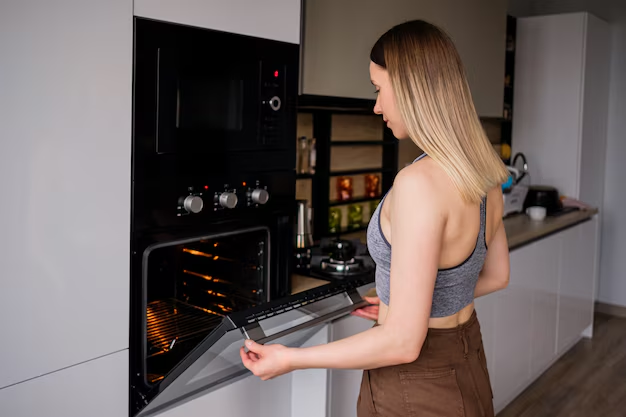Mastering the Art of Defrosting Your Samsung Refrigerator: A Step-by-Step Guide
Modern refrigerators are a cornerstone of kitchen convenience, keeping our food fresh and drinks cool. Samsung refrigerators have a stellar reputation for reliability, but like any appliance, they can occasionally present issues that need attention. One common problem among Samsung owners is the accumulation of frost, which can impede performance and cause headaches. If you've noticed your refrigerator building up frost faster than justifiable or not cooling adequately, it might be time to force defrost.
In this guide, we'll delve into what it means to force defrost a Samsung refrigerator, the steps to conduct this process efficiently, and additional tips to prevent frost accumulation in the future.
Understanding the Defrost Mechanism in Samsung Refrigerators
Before diving into the technicality of forcing a defrost on your appliance, it's essential to understand how the defrost mechanism works. Samsung refrigerators typically come with an automatic defrost feature, which periodically melts away any frost that forms on the evaporator coils. This function is crucial because excess frost can disrupt airflow and lead to inconsistent temperatures, ultimately affecting food preservation.
Why Frost Forms
Frost primarily forms when warm, moist air comes in contact with the cold surfaces inside the refrigerator. Here are several reasons why this might happen more frequently:
- Frequent Door Openings: Constantly opening the refrigerator allows warm air to enter, potentially leading to frost buildup.
- Faulty Door Seals: Seals that are worn out, damaged, or not properly aligned lead to warm air seeping inside.
- Temperature Setting Issues: Setting the temperature too low can encourage frost growth.
Understanding these factors can help when diagnosing the root cause of frost problems. However, when frost accumulation becomes a problem, a manual defrost can be necessary.
🚀 Steps to Force Defrost Your Samsung Refrigerator
Forcing a defrost in a Samsung refrigerator should be approached methodically. Here's a step-by-step guide to safely and effectively perform a forced defrost:
Step 1: Access the Control Panel
Identify the Panel: Most Samsung refrigerators with a digital display have an accessible control panel. This panel might be on the inside wall or outside the device, depending on the model.
Enter Test Mode: Hold down a combination of buttons—typically the "Energy Saver" and "Fridge" or the "Power Cool" and "Fridge" buttons. This combination might vary, so consult your manual for specifics.
Scroll to the "Fd" (Forced Defrost) Option: Once in the test mode, use the buttons to navigate to the "Fd" option. This stands for forced defrost, which activates the defrost heater.
Step 2: Monitor the Defrost Cycle
Listen for Beeps: Initiating the forced defrost typically results in a beep indication that the defrost cycle has started.
Duration Monitoring: The defrost cycle automatically spans about 20 to 30 minutes. Ensure the cycle is completed to avoid potential damage to the device.
Heat Exchange: During the defrost process, you might notice your refrigerator warming slightly. This is normal and signals that the heater is working to melt the frost.
Step 3: Post-Defrost Management
Check Water Drainage: After defrosting, confirm that any melted water flows into the drip pan. Blockages can lead future issues, so it may be necessary to clean the drainage system.
Restart the Fridge: Some models automatically resume normal operations post-defrost. If they don’t, manually adjust the temperature settings to regular levels.
Observe Operation: Monitor the appliance over the next day or so to ensure it’s cooling efficiently and the frost isn't re-accumulating rapidly.
🤔 Troubleshooting Tips for Defrost Problems
While forcing a defrost can remedy frost issues, persistent problems might require additional troubleshooting:
Examine Door Seals
- Visual Inspection: Check that door seals aren’t cracked or visibly worn. This can be conducted visually or by feeling for cold air escapes.
- Perform the Paper Test: Close a piece of paper in the door. If you can easily pull it out, the seal may require replacement or adjustment.
Temperature Calibration
- Ensure Proper Settings: Confirm that the fridge and freezer are set to optimal temperatures. A common recommendation is around 37°F for the fridge and 0°F for the freezer.
Evaluate Air Circulation
- Avoid Overloading: Ensure your fridge isn’t overcrowded as blocked vents can impair airflow.
- Organize Efficiently: Strategic organization can help maintain consistent airflow.
🔧 Preventative Measures to Avoid Future Frost Buildup
Prevention is always better than cure. After ensuring your fridge is running smoothly again, it's wise to embrace strategies that minimize frost formation:
Regular Maintenance
- Scheduled Cleaning: Regularly clean and defrost, if needed, before substantial accumulation occurs.
- Inspect Drain Pipes: Ensure they remain unblocked to manage any defrosted water effectively.
Efficient Usage Habits
- Mindful Usage: Limit door use especially when the kitchen is humid.
- Prompt Storage: Return food items to the fridge promptly to minimize moisture introduction.
📝 Quick Tips for Keeping Your Samsung Refrigerator Frost-Free
Here is a concise summary of practical tips for reducing frost buildup, adorned with emojis for accessibility and ease:
- 🧊 Watch Door Use: Keep doors closed as much as possible to prevent warm air from entering.
- 🔍 Check Seals: Regularly inspect and maintain the door seals to ensure they are secure.
- 🌀 Maintain Airflow: Organize the interior to facilitate adequate air circulation around stored items.
- ❄️ Optimal Settings: Ensure temperature settings are within recommended ranges.
- 🔧 Regular Maintenance: Don’t skip regular cleaning and drain inspections.
By using these strategies, you can extend the lifespan of your refrigerator and maintain its optimal performance.
In conclusion, knowing how to force defrost your Samsung refrigerator equips you with the power to troubleshoot a common issue many face. Through preventative care and awareness of best practices, keeping frost at bay ensures your appliance serves you well for years to come. By understanding your appliance and attentive maintenance, you can maximize efficiency and convenience in your kitchen.
